Spread the good word!
Only in Okinawa: Things & Places Unique in This Japanese Prefecture!

Japan is a country I have happily visited time and again for its many loveable qualities. But these aside, I think you can never have too many visits to Japan because of all the special attractions each prefecture has to offer. And right now, Okinawa places among the top prefectures on my bucket list!
Not many people talk about it, and yet when you read about this prefecture, you’ll come up with a list of unique that may surprise you. Its refreshing beaches, seasonal flowers, and goliath-sized aquarium are only preludes to everything different in this island region. Want to know the that stand out to us? Keep scrolling!
Also read: Love Japan? Okinawa Deserves The Next Spot On Your Bucket List — Here’s Why!
1. The cliff shaped like an elephant trunk at Cape Manzamo
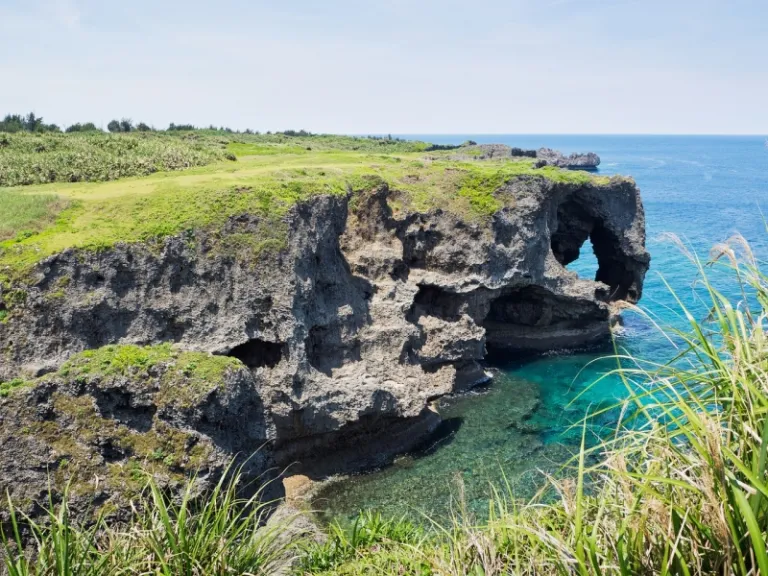
Beat the crowds at other like its beaches, and admire the prefecture’s stunning capes instead. Cape Manzamo, in particular, is popular for its elephant trunk-shaped coral cliff.
Listen and watch the powerful waves crash against the elevated rocks, and wait for the golden sunset of the East China Sea. The view of the sunset against the rocky surroundings is surely a sight you’d want to immortalise through photos! But aside from the striking rock formations, the plateau also makes for an ideal place to take a walk, thanks to its healthy expanse of greenery.
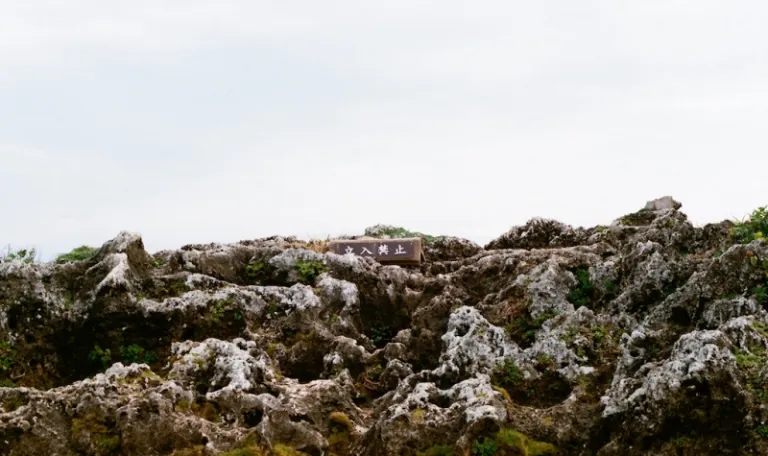
In fact, the vegetation on the limestones is considered a Natural Monument of the Okinawa Prefecture; this includes endemic plants such as Portulaca Okinawensis, Phyllanthus leptoclados, Viola utchinensis, and Aster asa-grayi!
And here’s a fun fact — before Japan declared Okinawa an official prefecture, it was ruled by the Ryukyu Kingdom. One of its rulers, King Sho Kei, claimed that Cape Manzamo’s plateau was so vast, it could seat 10,000 people. Hence, its name: 万 (“man”- 10,000), 座 (“za” – to sit), and 毛 (“mo” – field).
Tip: They say that the colour of the sea visibly changes from emerald to cerulean and vice versa at different times of the day. So, that’s something you might want to wait for!
2. Okinawa’s sacred power spots
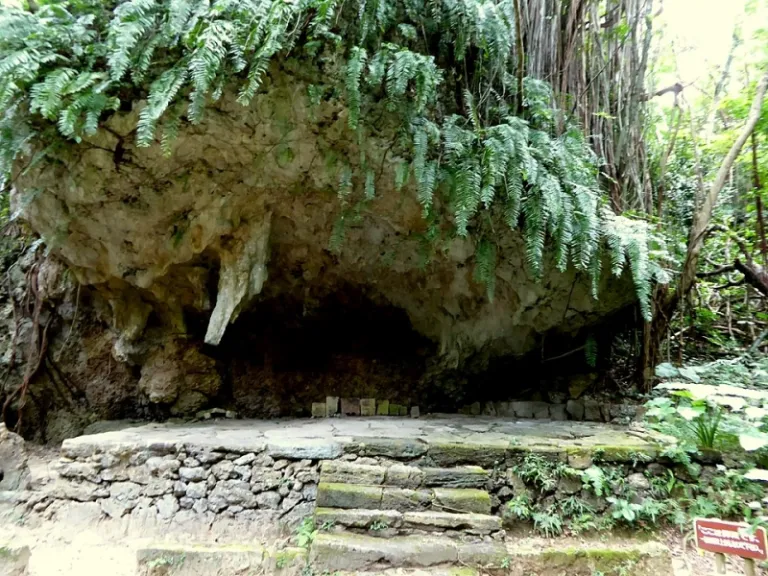
One thing I love about the Land of the Rising Sun is that it’s never difficult to commune with nature; Japan makes it a point to maintain their parks and protect all things that grow. Their power spots are a testament to this. But hold on — what’s a power spot?
It’s pretty simple, really. The Japanese believe that a power spot is a spiritual place in the middle of nature where we can recharge, invigorate our souls, and relax our minds and bodies. This may sound superstitious to you. But take it from me, there was something spiritually uplifting about the cool air, the rustle of trees, and the quietness on the path when I visited a known power spot in Tokyo. To those of you who want to experience the same thing in Okinawa, don’t fret. This prefecture is laden with therapeutic power spots — most, though not all, are found in its northern region!
Seifa Utaki
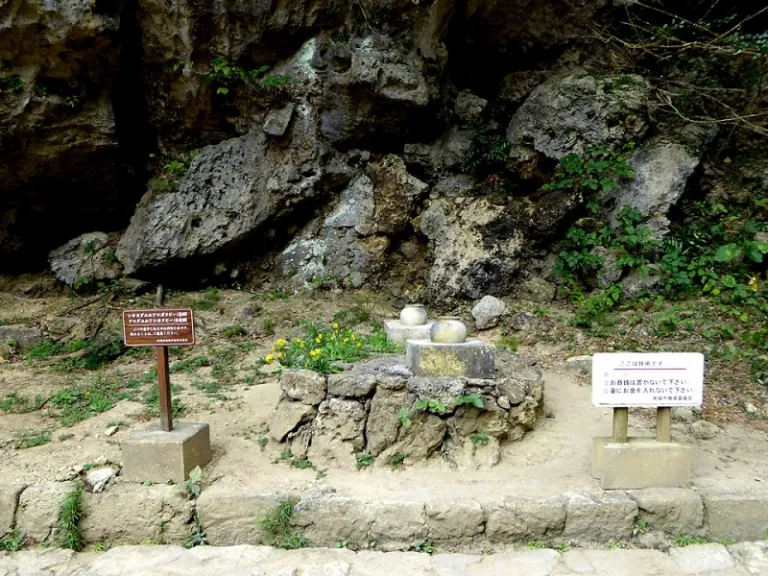
Let’s start with a power spot located down south in the mainland. Seifa Utaki is the most popular power spot in Okinawa. There are six sacred spots at this UNESCO World Heritage Site, where you may pause and meditate, but not before bowing and sending a prayer to the deities of nature at the entrance. Who knows, the nature spirits might just grant any wish you’ve recently made!
Back in the days of the Ryukyu Kingdom, only priestesses were allowed entry. Even kings weren’t allowed to enter unless they dressed as a woman. But today of course, everyone is welcome to experience the sacred atmosphere that is said to heal one’s spirit. This power spot is steeped in hallowed history, after all. For instance, this is where the Ryukyu kings held pilgrimages to pray for prosperity and bountiful harvests.
Unfortunately, this sacred space is sometimes troubled by tourists who don’t know how to conduct themselves. Bear in mind that Seifa Utaki is still a place of worship. Ergo, you are not allowed to remove stones and incense burners from their place, nor are you allowed to disturb the plants or animals you come across.
Daisekirinzan
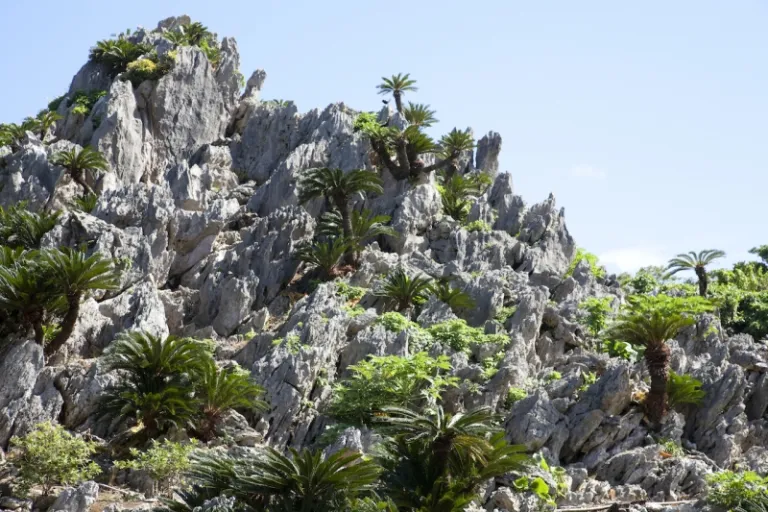
Another power spot you should visit is Daisekirinzan. As it is one of Okinawa’s biggest power spots, you can actually book a tour as well as go trekking at this location. Giant steep rocks and prolific greenery make most of this Okinawa attraction, and they’re also the power spot’s main elements.
These are said to give travellers the spiritual and energy boost they need, despite the minor trek travellers have to make. Tourists are allowed to take photos here too, but never forget that power spots are also sacred spaces, so keep your voice level to a minimum.
There are plenty more power spots in Okinawa you can visit like the limestone caves at the Valley of Gangara or the numerous power spots lying around Cape Zanpa. But honestly, Okinawa teems with them, so you might encounter one even when you don’t intend to.
I’ve always believed that the natural attractions of a destination already make half the adventure. And now, we see that Okinawa is more than just Japan’s tropical getaway, but it can also serve as a place of spiritual retreat!
3. The shisa statues you’ll find here and there
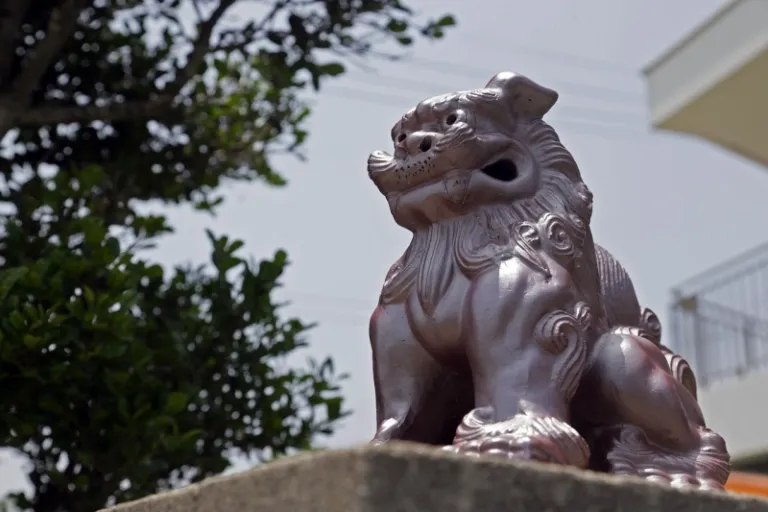
Speaking of spirituality, let’s move on to Okinawa’s main spiritual guardians, the shisa. Once you land in Okinawa, you’ll see these statue hybrids of a dog and lion everywhere, from the airport to corporate buildings and small shops, to temples and private houses. Shisa, which basically means lion, is considered the spiritual protector of Okinawa, making it an integral part of the prefecture’s daily culture.
Here’s a fun fact about them: they come in pairs and you can actually distinguish whether they’re male or female! The shisa is female if it has its mouth closed; with this, female shisa are believed to keep the good spirits in. A male shisa, on the other hand, has an opened mouth to scare away the evil spirits and bring good fortune instead.
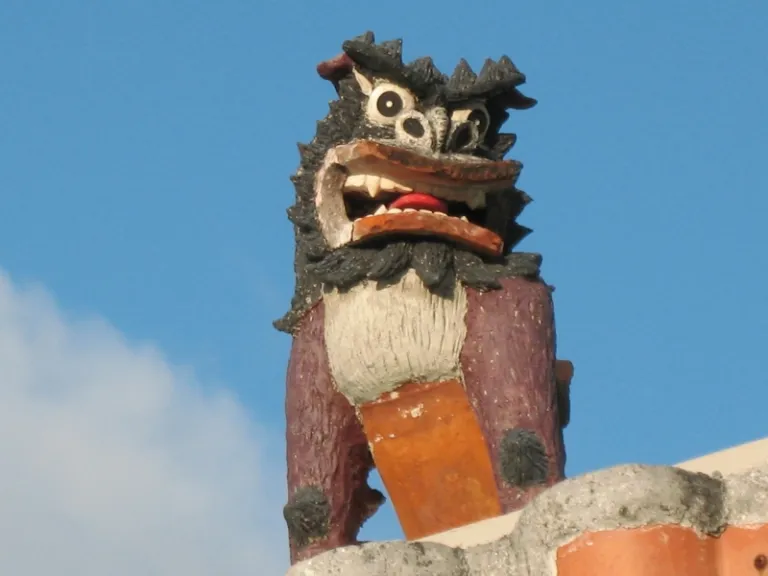
Comparisons between the shisa and komainu
Okinawa’s shisa are not to be mistaken for the komainu, which is a similar-looking lion figure found throughout the rest of Japan. For one, the shisa guardian came to Okinawa through the influence of Chinese culture in the 15th century. Meanwhile, the concept of the komainu was brought to Japan by the Koreans. Although both the shisa and the komainu protect against evil spirits, the komainu are only found at Buddhist temples, Shinto shrines, and noble homes; whereas Okinawa locals can put a shisa statue at any place they want to protect.
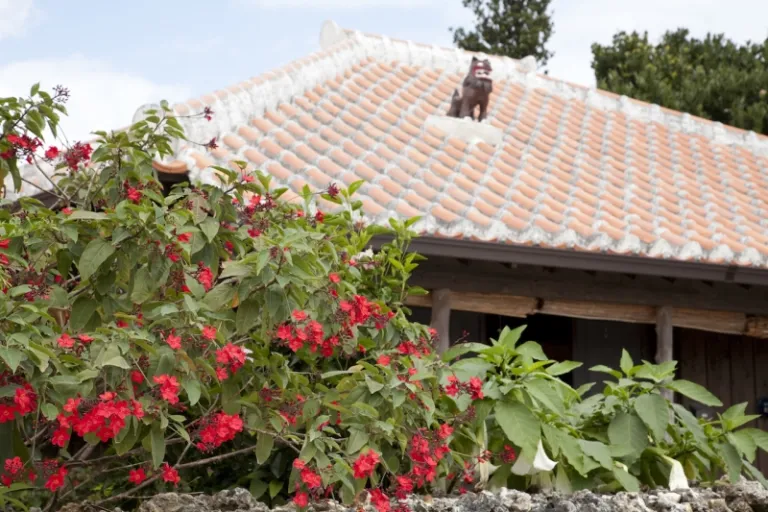
So, when you find yourself in Okinawa, take a good look at the different shisa statues because you won’t find them anywhere else in Japan, not even in Tokyo. Okinawa locals usually place them outdoors — especially on rooftops (they are guardians, after all). Do you think you can keep count of all the shisa you’ll come across?
4. The ancient ruins of the Ryukyu Kingdom
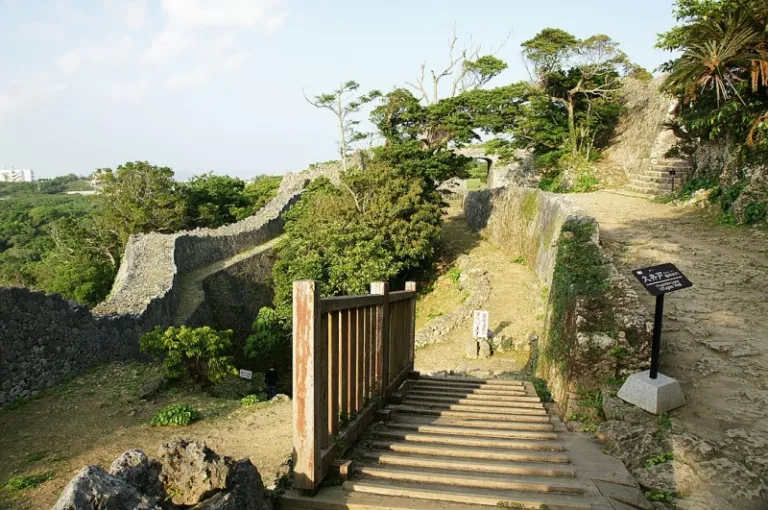
Let’s have a brief history lesson, shall we? Okinawa did not belong to Japan until the early 1600s, when the Satsuma domain invaded the island. Before then, it was an independent country known as the Ryukyu Kingdom. This name would only change to Okinawa in 1879 after Japan’s Meiji Restoration; afterwards, the place we now call Okinawa officially became a Japanese prefecture.
The Ryukyu Kingdom had its own royal family who established mighty fortresses throughout their land. At the peak of their power, the Ryukyu regime built more than 220 castles called gusuku, but due to the invasions that ravaged the island, only a few ruins remain.
That said, these ancient castle ruins are still worth exploring as they continue to be symbols of the Ryukyu Kingdom’s strong and unique heritage. Five castles, in particular, were declared UNESCO World Heritage Sites in 2000.
Shuri Castle
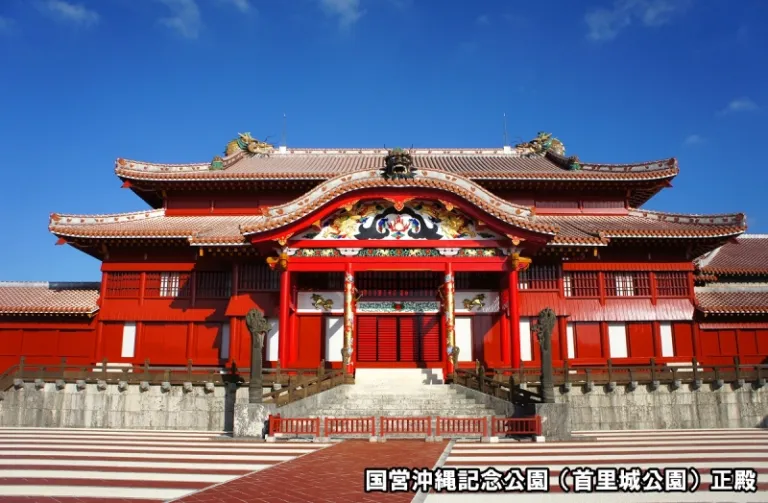
The Shuri Castle is the only Ryukyu fortress which was completely restored to its former glory. This is because it was also considered to be the kingdom’s most important castle — with it being the seat of government and a royal residence. The locals came too close to losing the whole castle in 1945 during the Battle of Okinawa, so they made sure that they strictly consulted historical documents and pictures when they reconstructed it in 1992.
Note: Sadly, parts of Shuri Castle were burned last October 2019, so some areas of the park are closed. Visit their website for more information!
Nakagusuku Castle ruins
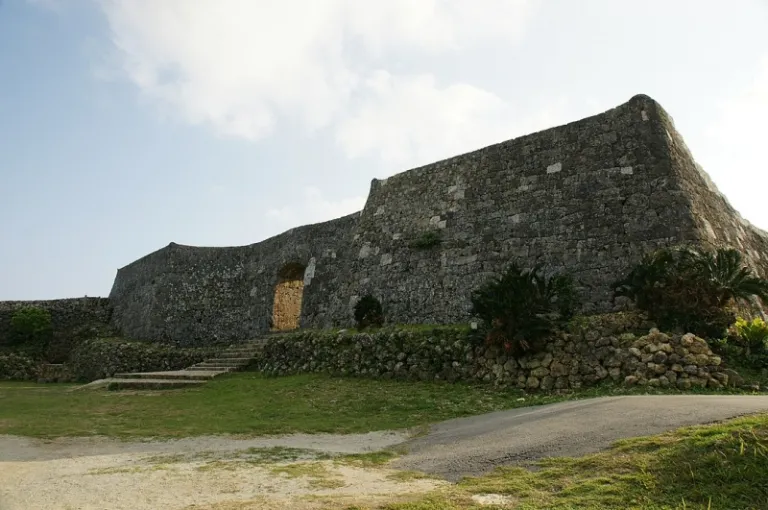
The Nakagusuku fortress was said to be built in the 14th century to protect the area’s residents from attacks of the neighbouring lord at the Katsuren Castle. The ruins are vast, with six enclosures and multiple citadels inside that you can make out even today. I would look and observe the structure very closely if I were you. This impressive stone fortress is a fascinating study of how the Ryukyu Kingdom practised their masonry in the days of old.
Katsuren Castle ruins
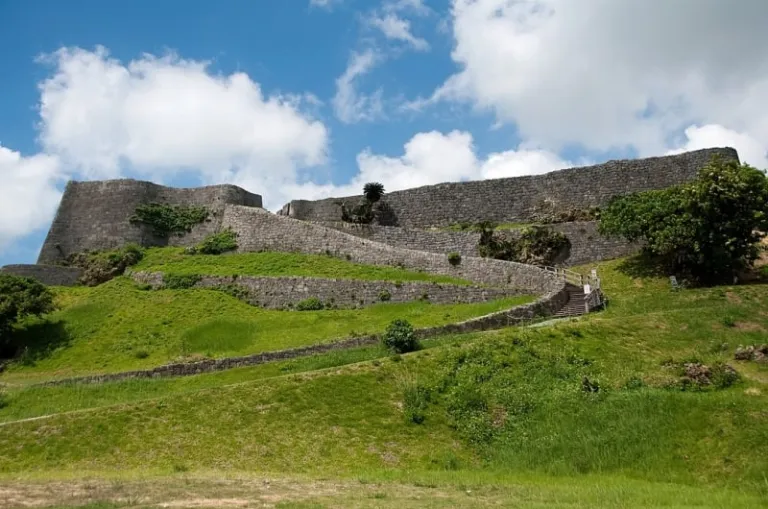
Katsuren Castle is located just northeast of Shuri Castle. It arguably has the best view of all the ruins because it looks out towards the Pacific Ocean; hence its nickname, Ocean Gusuku. This gusuku ruin still has a small museum inside where you can examine ancient artefacts that include objects from South Korea and China.
Nakijin Castle ruins
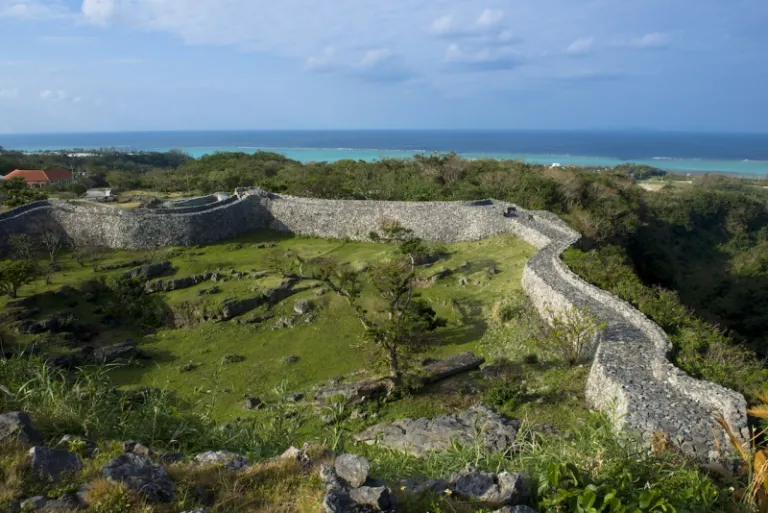
The Nakijin ruins are actually a bit different from the other castles because this one was governed by northern kings before everyone united under the Ryukyu Kingdom in the 15th century. Its abandoned limestone walls still sprout a pop of foliage which makes plenty of spots quite picturesque. Aside from the museum you can explore, there are also a lot of sacred groves or utaki to be found, since the castle used to be the centre of religious activity.
Zakimi Castle ruins
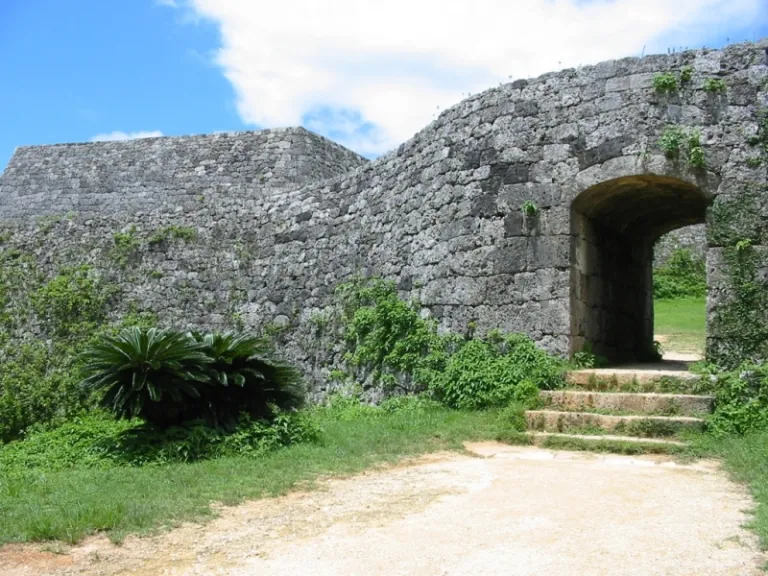
Among the many unique , the Zakimi Castle seems to be the one that has seen too many skirmishes. It was used as a safeguard against rebels before the region was united under the Ryukyu Kingdom. Following that, it became a base before and after WWII; belonging first to the Japanese, then to the US forces. But don’t let its dark history stop you from seeing it. These ruins also have a beautiful view of Okinawa’s flourishing landscape and glittering sea!
5. The black-breasted leaf turtles endemic to Okinawa
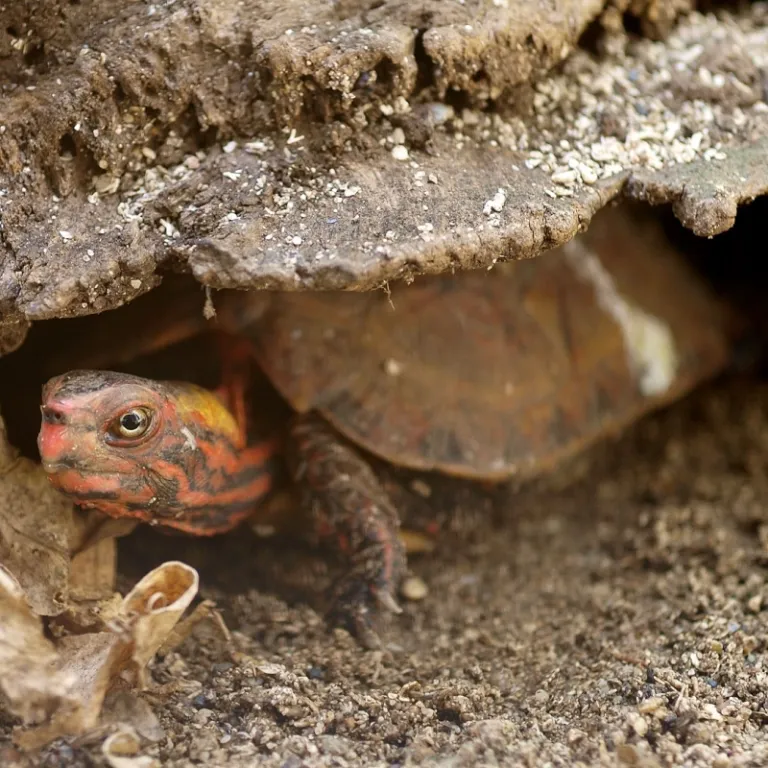
Animal lovers, there’s another endangered species that needs our protection, and thankfully, the Okinawa government has been one step ahead!
The black-breasted leaf turtles are precious wildlife creatures found in the forests and roads of Northern Okinawa. Since this turtle is endemic to the prefecture, it has also been declared a Natural Monument of Okinawa. Unfortunately, they are constantly threatened by road kills, poaching, and deforestation. Hence, the local authorities have made it a point to put up simple and readable wildlife information about these creatures. You’ll find such public signages at forests, and even on roads where cars might accidentally run the turtles over!
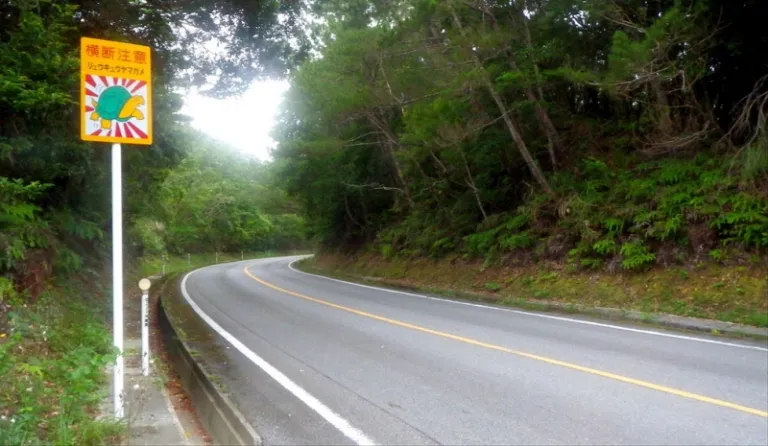
If you want to see these red-tinted reptiles, chances are you’ll be able to at the Yanbaru National Park. Along the park’s roadsides, and everywhere else in Northern Okinawa for that matter, you’ll notice constructed pits which they call “turtle ditches”. These ditches are usually covered in grass and have small steps or smooth inclines so that turtles, who fall into the ditches, can easily climb back to safety. Remember, these turtles aren’t pets, so don’t even think about picking them up from their natural habitat if you happen to spot them!
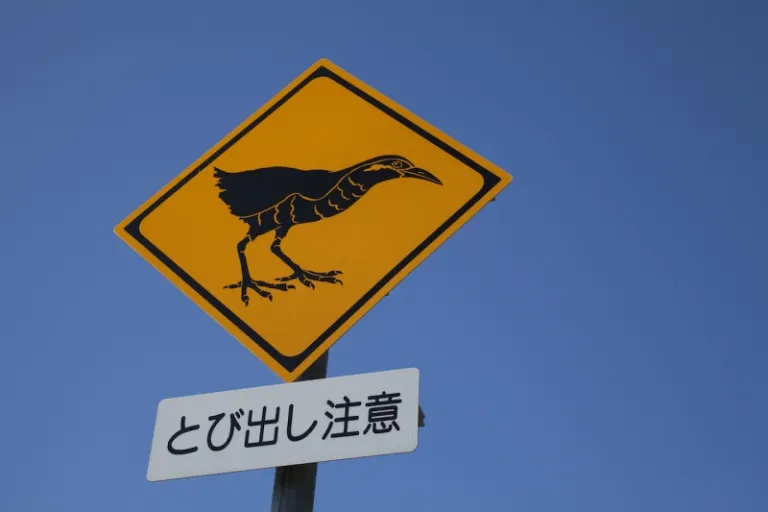
6. Okinawa’s vast mangroves where travellers can kayak
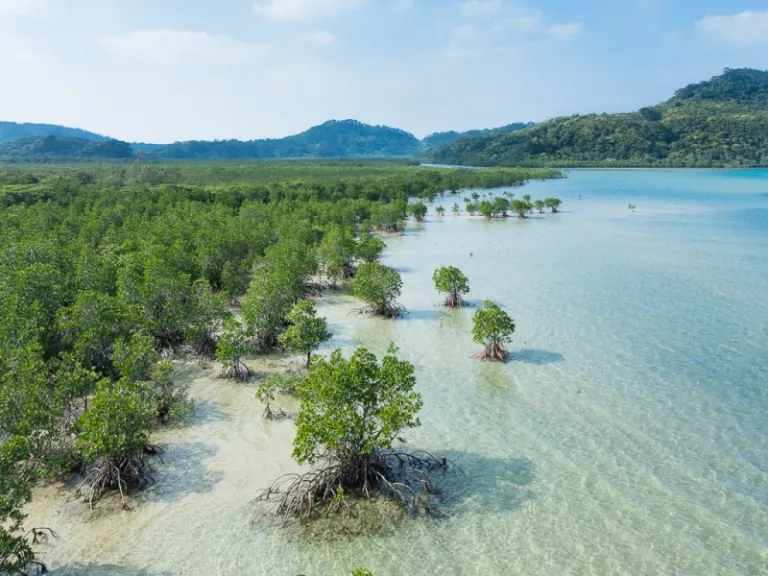
You’re probably thinking, “Mangroves in Japan?!” Well, to be fair, mangroves are actually rare in the Land of the Rising Sun. However, Okinawa teems with these prop-rooted and tide-loving trees, beating any other prefecture in Japan! Perhaps even more than snorkelling, kayaking among the mangroves in Okinawa will allow you to appreciate its rare ecosystem better. Clean, green, and seemingly boundless, the Okinawa mangroves are among the most beautiful you’re going to experience in Asia.
Yanbaru National Park
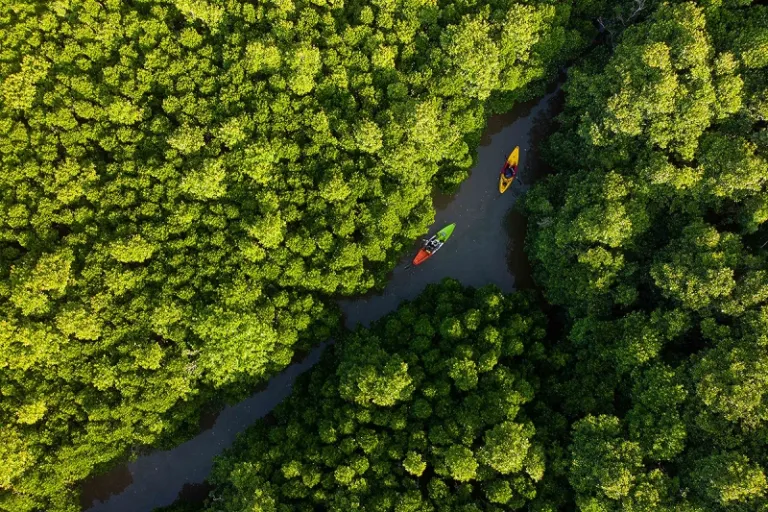
Now, let’s go back to the Yanbaru National Park. Aside from the endangered turtles we’ve already discussed, this Okinawa attraction is home to many more endangered species, such as the Yanbaru Kuina and the Okinawa Woodpecker. Because of this, Okinawa is aiming for the park to become a UNESCO World Heritage Site so that they can protect it better and hold more development projects. Yanbaru deserves no less — especially with its evergreen mangroves, forests, and abundant wildlife!
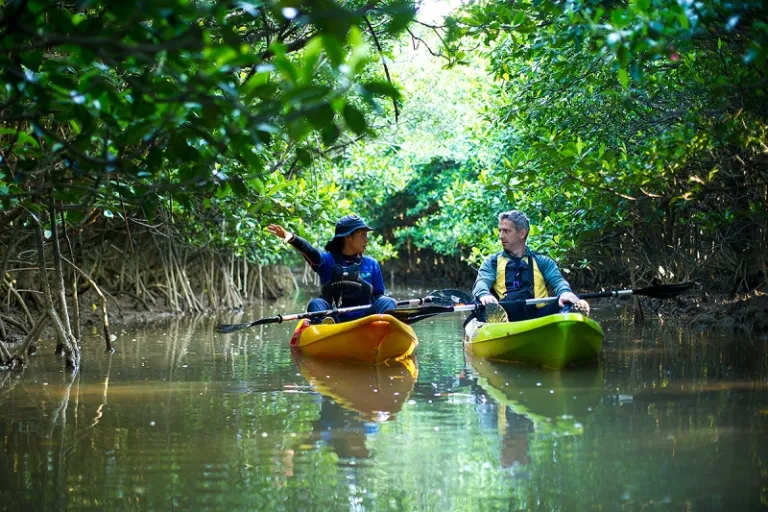
The best way to learn about the mangroves is to book a guided kayaking tour at Yanbaru. You’ll get an English-speaking guide who will lead you through the stream, and point out the different flora and fauna while telling you all about the park’s history. Don’t worry, you’ll get the chance to stop at the river banks to snap some photos too. Just watch out for the bounty of crabs hiding among the roots of the mangrove trees!
More mangroves
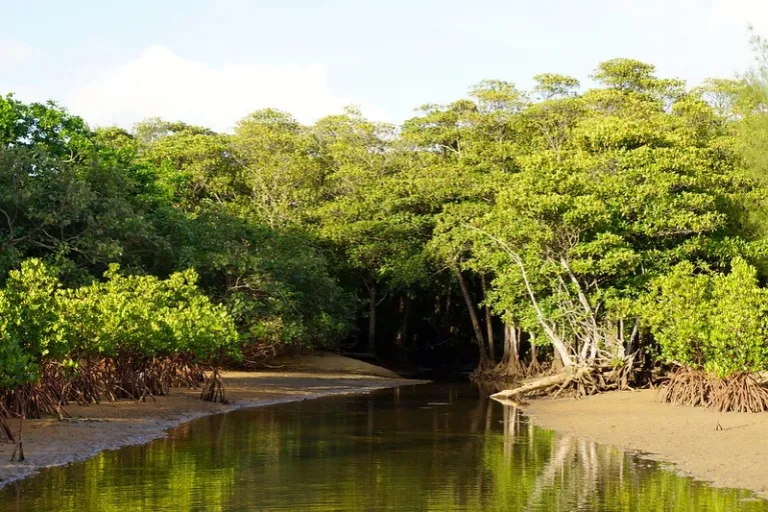
Exploring the rest of Yanbaru will also lead you to the Hiji Falls and Gesashi Bay. This bay is home to Okinawa’s largest mangrove that covers approximately 10 hectares; even better, it has a course that leads to a view of the breathtaking Pacific Ocean (what a spectacle!).
If you want to see more scenic mangroves, head to Iriomote Island, the second largest island in Okinawa. Although not as big as Yanbura’s mangroves, the mangroves along Iriomote’s Urauchi River are quiet, thriving with wildlife, and are great for kayaking beginners. You literally have no excuse to pass on mangrove kayaking at this point!
Don’t these unique pique your interest? If you hold Japan close to your adventure-loving soul, it’s time to deviate from mainstream prefectures and set your eyes on Okinawa’s solitary beauty. There are natural wonders to behold, ancient ruins with stories to tell, and a culture curiously different from Japan’s mainland. Stop mulling it over — you already know that Okinawa is too much of an exciting destination for you to resist!
For more information, please visit Okinawa Tourism’s official website, Facebook, and Instagram.
Brought to you by the Okinawa Convention & Visitors Bureau.
Published at
About Author
Therese Sta. Maria
Subscribe our Newsletter
Get our weekly tips and travel news!
Recommended Articles
10 Commandments for Responsible Travel Flexing 10 Fairytale Castles In Europe Filipinos Need To See! Permission to feel like royalty even for a day?!
10 Family Outing Ideas in Metro Manila Under ₱500 Looking for a weekend bonding with the family under ₱500? Head to these places, pronto!
10 Visa-Free Destinations Perfect for Your Family’s Holiday Vacation Yes, family vacations are priceless. But the planning can be a major pain! If we’re being honest, we’d really prefer a stress-free experience, please. One of the biggest hurdles in planning an out-of-the-country trip with the family is getting visas for everyone on board. It’s time-consuming, expensive, and just generally very stressful. Luckily, there are […]
10 Water Sports & Activities in the Philippines (And Where to Try Them) Jump in and test the waters. (Just don’t forget your SPF.)
Latest Articles
Must-Buy Pasalubong in Bohol: Authentic Delicacies and Traditional Treats Savour the island’s flavours and bring home the best Bohol souvenirs.
Step-by-Step Guide: How Pinoy Travellers Can Get a Schengen Visa Step-by-step guide to getting your Schengen visa for the Netherlands.
Saudi Arabia's New Visa Rule Makes Travel Easier for Filipinos Saudi Arabia now offers easier visas for Filipinos—find out more!
Best Airbnbs in the Philippines for a Barkada Getaway Discover top Airbnb stays in the Philippines for the ultimate barkada getaway—beachfront, poolside, and scenic retreats await!
8 Walkable and Bike-Friendly Cities in the Philippines Ditch the cars and take on the streets with these walkable cities in the Philippines!

